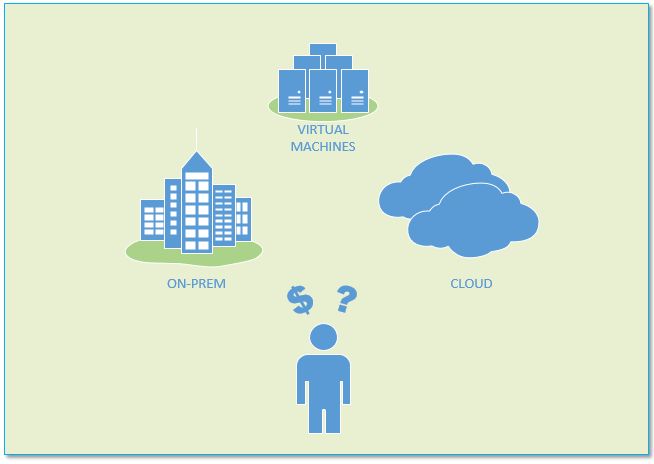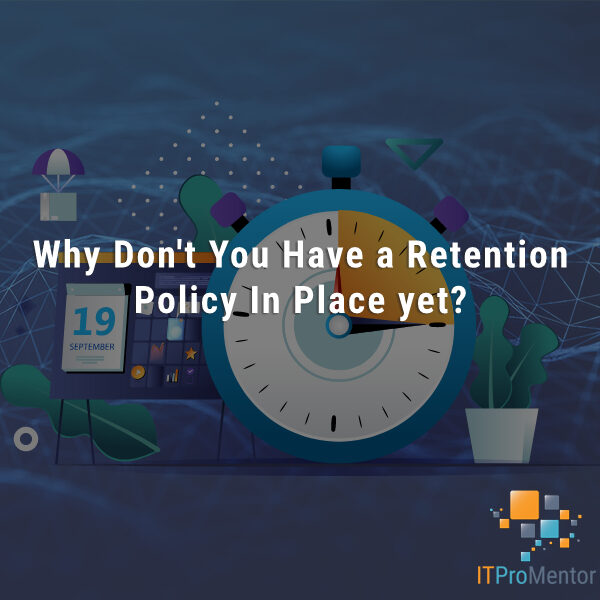Get Rid of My Servers!
If the cloud is supposed to be so great, then why do so many small businesses still have servers?
It is a fair question. The truth is, you probably do not need to maintain servers on-premises, but that doesn’t mean you won’t still want to. The majority of small businesses (the “S” in SMB) have very similar and simple IT needs. Office 365 alone covers a large gamut of those needs. If you used to rely primarily on Small Business Server, then Office 365 might be “enough” for your small business all on its own.
Certainly, if you were starting up a new small business, I do not believe you would be looking to an on-premises server as part of a technology platform/solution. Office 365 (or similar, Google Apps, etc.) would most likely be your launchpad.
Besides, the point of technology should be to take you beyond enough and extend your reach into previously uncharted possibilities. I think that Office 365 delivers on this promise, to a greater extent than what you can deliver on-premises. We will explore more on this topic later. Suffice it to say that the 365 suite is still largely under-utilized in our market segment, and some core products/features are left unexploited or at least under-exploited–SharePoint, Delve, Skype for Business, PowerBI–the list goes on–most SMB’s haven’t even started scratching the surface of what’s possible yet.
For those that remain heavily invested in legacy apps and processes, or find themselves with other business needs that cannot be met in SaaS, Hyper-V virtualization with on-premises servers can still provide basic network and directory services, file shares, database servers, line of business applications and so forth. Of course, Microsoft Azure supports virtual machines as well, and that might be a good solution for your small business, too. For what it’s worth, I typically find Hyper-V is still more cost-effective in our market segment, despite the cloud hype.
Either way, the reality of today’s computing landscape is this: we have a multiplicity of ways of accomplishing the same thing–on-premises or in the cloud. Often it is a combination of both (hybrid). Some small businesses still choose to remain on-premises for a variety of reasons:
- Cost: In some cases, maintaining servers on-premises can be more cost-effective, other times not–it depends on your scenario and your business objectives. That’s one reason you should consult with a partner before proceeding head-first down one path or another. The thing is, when your business shops based on price alone, you are usually only thinking about needs–the basics–the plumbing. Instead, consider focusing on value–how do the products stack up against each other to provide competitive advantages for your small business?
- Bandwidth/latency: Usually a concern in areas with underdeveloped broadband Internet access/reliability, but it also depends on what types of files & applications your business works with. In a few use cases, performance is just better for certain types of workloads that are hosted on a faster Local Area Network (LAN) vs. online or in the cloud. A common example of this might be CAD files for engineering, video files for editing, or anything where you need a lot of data processed locally.
- Legacy applications: Some apps may not be supported in the cloud, or you might have integrations with third parties/partners that would be difficult to “shift-and-lift” into a cloud like Azure. Typically, if it runs on Hyper-V or physical servers in your own datacenter, then you can probably run it in Azure, as well. But very rarely, you will have a vendor who will refuse application support if it is hosted in a third-party public cloud like Amazon or Azure.
- Security/compliance: In my opinion any fears around cloud vs. on-prem security these days are typically unfounded. The tools we have for securing data in the cloud are now far better and more responsive to emerging threats than what you’re likely able to provide on-premises (see Azure Identity Protection for a good example). However, some compliance issues do remain a concern–these have to do with questions like: who owns system metadata, access logs, encryption keys and so forth? Could a government reach into the public cloud and read your data? In some cases, yes (but Microsoft has been good about standing up for privacy–even taking governments to court over these kinds of issues). Again these concerns will usually apply to certain niche businesses and industries.
- Control: Some folks just do not like the idea of giving up control over their stack to a third-party provider. For example, if a cloud service goes down or becomes unavailable, it is truly out of your control. If there is a problem in your own datacenter, you can take action to correct the issue yourself. You can see that for some personality types, the cloud would be a better fit, while others will want to maintain more “ownership” of their resources, even if it comes with more responsibility. Most cloud services financially guarantee uptime with an SLA, meaning your account gets credited for excessive downtime/outages.
For all these reasons and more, traditional on-premises servers are not going away as quickly as some of the hype would have you believe. But I just want to talk about one more “roadblock” for some small businesses that can become an unfortunate factor in staving off cloud application adoption, when it might otherwise be a really good fit.
- Fear of change: Yes, this is real. Sometimes I consult with a small business, we do the math together, and I demonstrate that Office 365 is not only better but also cheaper than what they would pay to have Exchange hosted on-premises and buy all their software from Microsoft Open Volume Licensing. We will usually go over the list of other issues already mentioned, which they will readily agree are not really concerns for them, but then choose to remain on-premises anyway.
Hey, it’s still a free country, right? It is ultimately their choice how they want to consume their services. But I think if you’re in this camp just because you’d rather “play it safe” by remaining off the early adoption list… well, I’ve got some news for you. You aren’t that early to this party. The cloud (especially the Microsoft cloud) is getting pretty mature now, and with new features and protections being released into this platform literally with each passing month, I don’t think it makes sense to remain on the sidelines in your next refresh cycle, unless you have very good reasons for doing so.
If you are wanting to “Get Rid of Your Servers,” or at least move toward a hybrid model, reducing your on-premises footprint & reliance on self-maintained hardware, then you’ve come to the right place. Feel free to reach out for help any time if you are feeling stuck or uncertain about how to proceed.




Leave a Reply